| |
IEEE ICC 2013 Tutorials
Sunday, 9 June 2013, 09:00 – 12:30
T2: Network Coding: From Theory to Practice
T3: Spatial Modulation (SM) for MIMO Wireless Systems
T4: Medium Access Control and Routing in Cognitive Radio Networks: Review, Classification, Cross-layer Approach and Challenges
T5: Massive MIMO Systems
T8: Self-Organizing Small Cell Networks: A Tutorial
Sunday, 9 June 2013, 14:00 – 17:30
T1: Foundations of Network Localization and Navigation
T6: Cartography for Cognitive Networks
T7: Self-Organising Networks (SON): From Conception to Realisation
T9: Power Line Communications: Modeling, Algorithms and Applications
T10: Energy Harvesting Wireless Communications
Thursday, 13 June 2013, 09:00 – 12:30
T11: Energy Harvesting Wireless Networks: Energy Management Policies and Protocol Design
T12: Network Processing with Bayesian Graphical Models
T13: Coordinated Multi-Point in Cellular Networks: From Theoretical Gains to Realistic Solutions and Their Potentials
T14: Vehicular Networking: Standards, Protocols, Applications, and Deployment Plans
T15: “Do-It-Yourself” Spectrally Agile Waveform Design: Implementing Dynamic Spectrum Access in 24 Hours
T16: Autonomic Networks, Principles and Implementation for QoS, Security and Energy Savings
Thursday, 13 June 2013, 14:00 – 17:30
T17: Greening the Internet
T18: OFDM for Optical Communications
T19: Moving Forward in Cellular: Emerging Concepts and Technologies for Beyond-2020 Networks
T20: Small Cell and HetNet Deployment
T21: From Network based Location Estimation to Location Aided Communications
T22: Smart Grid Communications and Networking
Sunday, 9 June 2013
09:00 – 12:30
T2: Network Coding: From Theory to Practice
The tutorial provides an introduction to the rapidly growing research area of network coding. Network coding allows intermediate nodes in a network to manipulate data, for example by sending out packets that are combinations of previously received packets instead of simply forwarding them. The initial theoretical results on network coding were followed by a wealth of applications in a number of different areas that show that the theoretical insights can be translated into practical gains.
The tutorial is divided into three parts. The first part provides the participants with the theoretical tools necessary to understand the field of network coding and focuses on the underlying algebraic principles. It will also introduce distributed randomized network codes and discuss their properties. We will not assume any prior knowledge of advanced algebra or optimization. The second part of the tutorial gives an overview of the different application areas and discusses, which types of networking problems are amenable to network coding (and which aren't). Finally, we will discuss implementation aspects in real-world systems, covering wireless meshed networks, distributed storage, heterogeneous networks and some more.
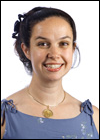 |
Speaker: Muriel Médard, MIT, USA
Bio: Muriel Médard is a Professor in the Electrical Engineering and Computer Science at MIT. Professor Médard received B.S. degrees in EECS and in Mathematics in 1989, a B.S. degree in Humanities in 1990, a M.S. degree in EE 1991, and a Sc D. degree in EE in 1995, all from the Massachusetts Institute of Technology (MIT), Cambridge. She serves as an associate editor for the IEEE/OSA Journal of Lightwave Technology and is a member of the Board of Governors of the IEEE Information Theory Society. Professor Médard's research interests are in the areas of network coding and reliable communications, particularly for optical and wireless networks. She was awarded the IEEE Leon K. Kirchmayer Prize Paper Award 2002 for her paper, "The Effect Upon Channel Capacity in Wireless Communications of Perfect and Imperfect Knowledge of the Channel. She was co- awarded the Best Paper Award for G. Weichenberg, V. Chan, M. Médard, "Reliable Architectures for Networks Under Stress”. She received a NSF Career Award in 2001 and was co-winner 2004 Harold E. Edgerton Faculty Achievement Award, established in 1982 to honor junior faculty members "for distinction in research, teaching and service to the MIT community." She was named a 2007 Gilbreth Lecturer by the National Academy of Engineering. Professor Médard is a House Master at Next House and a Fellow of IEEE.
|
| |
|
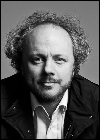 |
Speaker: Frank H. P. Fitzek, University of Aalborg, Denmark
Bio: Frank H. P. Fitzek is a Professor in the department of Electronic Systems, University of Aalborg, Denmark heading the Mobile Device group. He received his diploma (Dipl.-Ing.) degree in electrical engineering from the University of Technology - Rheinisch-Westfälische Technische Hochschule (RWTH) - Aachen, Germany, in 1997 and his Ph.D. (Dr.-Ing.) in Electrical Engineering from the Technical University Berlin, Germany in 2002 and became Adjunct Professor at the University of Ferrara, Italy. He co-founded the start-up company acticom GmbH in Berlin in 1999. He has visited various research institutes including Massachusetts Institute of Technology (MIT), VTT, and Arizona State University. In 2005 he won the YRP award for the work on MIMO MDC and received the Young Elite Researcher Award of Denmark. He was selected to receive the NOKIA Champion Award four times in a row in 2007 to 2010. In 2008 he was awarded the Nokia Achievement Award for his work on cooperative networks. His current research interests are in the areas of wireless and mobile communication networks, mobile phone programming, cross layer as well as energy efficient protocol design and cooperative networking. |
Back to Top
Sunday, 9 June 2013
09:00 – 12:30
T3: Spatial Modulation (SM) for MIMO Wireless Systems
The key challenge for future wireless communications is to make these networks energy-efficient and spectrum efficient at the same time. This results in a paradigm-shifting requirement which necessitates a clean-slate approach of wireless system design. Clearly, such approach will have to embrace the rich body of knowledge that has been created especially on Multiple-Input-Multiple-Output (MIMO) technology during the last 25 years. This motivates us to give a tutorial on an emerging wireless communications concept for “massive” MIMO systems, which is today known as Spatial Modulation (SM). SM has recently established itself as a beneficial transmission paradigm, potentially subsuming all members of the MIMO family, which exploits multiple antennas in a novel fashion. The research on SM has reached sufficient maturity to substantiate its claimed advantages compared with state-of-the-art standardized MIMO concepts, as well as its applications to other emerging wireless systems such as relay-aided, cooperative, small cell, optical wireless, and green communications. Furthermore, it has received sufficient attention to be implemented in testbeds, and holds the promise of stimulating further vigorous inter-disciplinary research in the next years. We believe that this is a timely topic and that this tutorial will be of interest to many researchers/students/practitioners with different backgrounds.
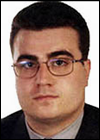 |
Speaker: Marco Di Renzo, French National Center for Scientific Research, France
Bio: Marco Di Renzo (S’05-AM’07-M’09) received the Ph.D. degree in Electrical and Information Engineering from the Department of Electrical and Information Engineering, University of L’Aquila, Italy, in 2007. Since 2010, he has been a Tenured Academic Researcher with the French National Center for Scientific Research (CNRS), as well as a faculty member of the Laboratory of Signals and Systems (L2S), a joint research laboratory of the CNRS, the Ecole Suprieure d’Electricité (SUPELEC), and the University of Paris-Sud XI, Paris, France. His main research interests are in the area of wireless communications theory, signal processing, and information theory. Dr. Di Renzo is the recipient of the special mention for the outstanding five-year (1997-2003) academic career, University of L’Aquila, Italy; the THALES Communications fellowship for doctoral studies (2003-2006), University of L’Aquila, Italy; the Torres Quevedo award for his research on ultra wide band systems and cooperative localization for wireless networks (2008-2009), Ministry of Science and Innovation, Spain; the 2012 IEEE CAMAD Best Paper Award; and the 2013 Reviewer Appreciation Award from the IEEE Wireless Communications Letters.
|
| |
|
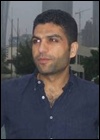 |
Speaker: Ali Ghrayeb, Concordia University, Canada
Bio: Ali Ghrayeb (S’97-M’00-SM’06) received the Ph.D. degree in electrical engineering from the University of Arizona, Tucson, USA in 2000. He is currently a Professor with the Department of Electrical and Computer Engineering, Concordia University, Montreal, QC, Canada. He is a co-recipient of the IEEE Globecom 2010 Best Paper Award. He holds a Concordia University Research Chair in Wireless Communications. He is the co-author of the book ”Coding for MIMO Communication Systems” (Wiley, 2008). His research interests include wireless and mobile communications, error correcting coding, MIMO systems, wireless cooperative networks, and cognitive radio systems. Dr. Ghrayeb has instructed/co-instructed technical tutorials related to MIMO systems at several major IEEE conferences, including ICC, Globecom, WCNC and PIMRC. He served as a co-chair of the Communications Theory Symposium of IEEE Globecom 2011, Houston, Texas. He serves as an Editor of the IEEE Transactons on Wireless Communications, the IEEE Transactions on Communications, and the Physical Communications Journal. He served as an Editor of the IEEE Transactions on Signal Processing, an Associate Editor of the IEEE Transactions on Vehicular Technology.
|
| |
|
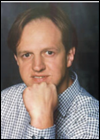 |
Speaker: Harald Haas, University of Edinburgh, UK
Bio: Harald Haas (S’98-AM’00-M’03) holds the Chair of Mobile Communications in the Institute for Digital Communications (IDCOM) at the University of Edinburgh. He is co-founder and part-time CTO of a university spin-out company pureVLC Ltd. His main research interests are in the areas of wireless system design and analysis with a particular focus on interference coordination in wireless networks, spatial modulation, and optical wireless communication. Professor Haas holds more than 23 patents. He has published more than 55 journal papers including a Science Article and more than 160 peer-reviewed conference papers. He has co-authored a book entitled ”Next Generation Mobile Access Technologies: Implementing TDD” with Cambridge University Press. Since 2007, he has been a Regular High Level Visiting Scientist supported by the Chinese ”111 program” at Beijing University of Posts and Telecommunications (BUPT). He was an invited speaker at the TED Global conference 2011. He has been shortlisted for the World Technology Award for communications technology (individual) 2011. He is Associate Editor of IEEE Transactions on Communications. He has been chair and co-chair of the Optical Wireless Communications (OWC) workshop at Globecom 2011 and 2012 respectively. He recently has been awarded the EPSRC Established Career Fellowship.
|
Back to Top
Sunday, 9 June 2013
09:00 – 12:30
T4: Medium Access Control and Routing in Cognitive Radio Networks: Review, Classification, Cross-layer Approach and Challenges
The introduction of the cognitive paradigm in wireless networks requires a step beyond the definition of a single, “cognitive” smart device, calling for a novel approach in the design of algorithms and protocols determining the interaction between nodes, aimingat efficient use of information related to both internal network status and external environment. In the above context, this tutorial focuses on the design of Medium Access Control (MAC) and routing in cognitive wireless networks, taking into account the specific requirements deriving from the need to coexist with other wireless systems.
The tutorial opens by reviewing and classifying existing approaches at MAC design, introducing a novel classification scheme that defines a set of fundamental functions of a Cognitive MAC, and identifies existing solutions and open research challenges for each of such functions. Next, the tutorial analyses the problem of routing in multi-hop overlay, interweave and underlay cognitive radio networks, and addresses the problem of routing in networks composed of devices equipped with multiple Radio Access Technologies.
Finally, the tutorial addresses the information required to support the deployment of MAC and routing protocols, focusing in particular on the exchange of information between layers either along or across the traditional OSI-like layered architecture.
 |
Speaker: Luca De Nardis, Sapienza University of Rome, Italy
Bio: Dr. Luca De Nardis (MIEEE ‘98) received both his Laurea degree and his Ph.D. from Sapienza University of Rome in 2001 and 2005, respectively. Since December 2008 he is an Assistant Professor at the DIET Department of Sapienza University of Rome. In 2007 he was a post-doctoral fellow at the EECS Department at the University of California at Berkeley. Luca De Nardis authored or co-authored over 70 publications in international peer-reviewed journals and conferences.He is currently an Editor for the Journal of Electrical and Computer Engineering, published by Hindawi Publishing Corporation. He is also a reviewer for several international Journals and Transactions published by IEEE, ACM and EURASIP, and served as member of Technical Program Committee of over 30 international IEEE conferences. He is currently involved in two European COST Actions on Cognitive Radio: IC0902, where he is currently leading the Working Group on cross-layer design and cognitive engine, and IC0905 for which he is a national delegate for Italy and leads the Working Group on Cognitive radio application scenarios. He is also participating in the FP7 ACROPOLIS NoE, where he leads the Work Package on Neighbourhood and Network Awareness.
|
| |
|
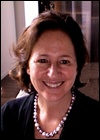 |
Speaker: Maria-Gabriella Di Benedetto, Sapienza University of Rome, Italy
Bio: Prof. Maria-Gabriella Di Benedetto obtained her Ph.D. in Telecommunications in 1987 from Sapienza University of Rome, Italy. In 1991, she joined the Faculty of Engineering of Sapienza University of Rome, where currently she is a Full Professor of Telecommunications. She has held visiting positions at the Massachusetts Institute of Technology, the University of California, Berkeley, and the University of Paris XI, France. In 1994, she received the Mac Kay Professorship award from the University of California, Berkeley. Her research interests include wireless communication systems and speech. From 1995 to 2000, she directed four European ACTS projects for the design of UMTS. Since 2000, she has been active in fostering the development of Ultra Wide Band (UWB) radio communications in Europe, and participated in several pioneering EU projects on UWB communications. Professor Di Benedetto currently coordinates COST Action IC0902 'Cognitive Radio and Networking for Cooperative Coexistence of Heterogeneous Wireless Networks' and her research group participates in the European Network of Excellence ACROPOLIS (Advanced coexistence technologies for radio optimisation in licensed and unlicensed spectrum). In October 2009, Dr. Di Benedetto received the Excellence in Research award 'SapienzaRicerca', under the auspices of President of Italy, Giorgio Napolitano
|
| |
|
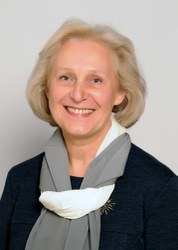 |
Speaker: Liljana Gavrilovska, Ss Cyril and Methodius University in Skopje, Macedonia
Bio: Prof. Liljana Gavrilovska (SMIEEE) currently holds the position of full professor and Head of the Institute of Telecommunications at the Faculty of Electrical Engineering and Information Technologies, Ss Cyril and Methodius University in Skopje. She is also Head of the Center for Wireless and Mobile Communications (CWMC). She has received her B.Sc. and Ph.D. from Ss Cyril and Methodius University in Skopje, and her M.Sc. from University of Belgrade. She held positions of visiting professor (2000-2008) and Associate Research Professor (2001-2002) at Aalborg University, Denmark. She has participated in several EU projects since FP4, and national /international projects; shewas the General Technical Manager of FP6 MAGNET Beyond (2007-2008). She is currently partner leader in the FP7 funded QUASAR, FARAMIR and ACROPOLIS projects. She authored/co-authored over 100 research journal and conference papers. She co-authored the book Ad Hoc Networking Towards Seamless Communications (Springer, 2006) and co-edited the book Application and Multidisciplinary Aspects of Wireless Sensor Networks (Springer, 2010). Her research group achieved a best demo award atDySPAN2011. She has received the UKIM’s Scientist of the year award in 2012. Her research interest is concentrated on cognitive radio networks, future mobile systems, wireless, ad hoc and personal area networks, cross-layer optimizations, broadband wireless access technologies, traffic analysis and heterogeneous wireless networks.
|
| |
|
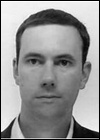 |
Speaker: Oliver Holland, King’s College London, UK
Bio: Dr. Oliver Holland King’s College London, is serving as Project Manager and Deputy Coordinator of the ICT-ACROPOLIS Network of Excellence. Oliver is a Leadership Member of IEEE DySPAN-SC, member and Vice-Chair of IEEE 1900.1 and IEEE 1900.7, and member of IEEE 1900.6. Oliver was a Technical Editor of IEEE 1900.4, and is Technical Editor of the developing IEEE 1900.1a and 1900.6a. He is Management Committee member ofCOST IC0902 and IC0905 “TERRA”, holding various leadership positions therein. Oliver has served on the TPC of all major mobile and wireless communications conferences, and has served as Session Chair and Panellist at numerous conferences. Oliver had leadership positions in numerous International Workshops, Conferences, and Journals. Among many examples, he was guest editor of a prestigious special issue on Cognitive Radio appearing in IEEE Transactions on Vehicular Technology (TVT), co-chair of the “Cognitive Radio and Cooperative Communications” track of IEEE VTC 2010-Fall, Tutorials Co-Chair of IEEE CCNC 2012,TPC Co-Chair of ISWCS 2012, tutorials Co-Chair of ACM MSWiM 2012, is Co-Chair of technical tracks in IEEE VTC 2013-Spring and VTC 2013-Fall, and Tutorials Co-Chair of IEEE PIMRC 2013. Oliver is an Associate Editor of IEEE TVT, and an Officer of the IEEE Technical Committee on Cognitive Networks (TCCN), serving as liaison between TCCN and COST IC0905 “TERRA”, and between TCCN and DySPAN-SC. He is Chair of the UKRI Chapter of the IEEE VTS. Oliver has authored over 100 publications with more than 500 citations.
|
Back to Top
Sunday, 9 June 2013
09:00 – 12:30
T5: Massive MIMO Systems
Massive MIMO, or Very large MIMO, refers to using antenna arrays with an order of magnitude more elements than in systems being built today, say a hundred antennas or more. It is a new research field both in communication theory, propagation, and electronics. In cellular systems, massive MIMO offers the prospect of increasing rates and reliability by an order of magnitude, and saving an order of magnitude in transmit power. In this tutorial we will examine the challenges and opportunities associated with scaling up MIMO technology, especially in the context of cellular communications:
- Communication-theoretic/signal processing aspects.
- basic scaling laws of information theory
- what is “favorable propagation” and if we have that, then what can be ultimately achieved
- pilot contamination as the ultimate limit, how fundamental is it and what can be done
- transmitter precoding methods for massive MIMO
- pushing the frontier: open problems2. Propagation aspects.
- Conventional MIMO vs. massive MIMO from a propagation perspective?
- Spatial resolution, influence of antenna configuration
- Channel richness; is that a problem for massive MIMO?
- Shadowing effects and non-stationaries of large antennas
- Channel modeling for massive MIMO
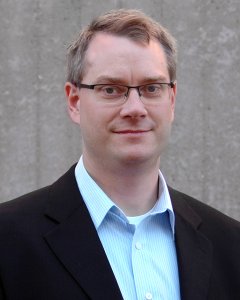 |
Speaker: Erik G. Larsson Linköping University, Sweden
Bio: Erik G. Larsson received his Ph.D. degree from Uppsala University, Sweden, in 2002. Since 2007, he is Professor and Head of the Division for Communication Systems in the Department of Electrical Engineering (ISY) at Linköping University (LiU) in Linköping, Sweden. He has previously been Associate Professor (Docent) at the Royal Institute of Technology (KTH) in Stockholm, Sweden, and Assistant Professor at the University of Florida and the George Washington University, USA. His main professional interests are within the areas of wireless communications and signal processing. He has published some 80 journal papers on these topics, he is co-author of the textbook Space-Time Block Coding for Wireless Communications (Cambridge Univ. Press, 2003) and he holds 10 patents on wireless technology. He is Associate Editor for the IEEE Transactions on Communications and he has previously been Associate Editor for several other IEEE journals. He is a member of the IEEE Signal Processing Society SPCOM technical committee. He is active in conference organization, most recently as the Technical Chair of the Asilomar Conference on Signals, Systems and Computers 2012 and Technical Program co-chair of the International Symposium on Turbo Codes and Iterative Information Processing 2012. He has also received the IEEE Signal Processing Magazine 2012 best column award
|
| |
|
 |
Speaker: Fredrik Tufvesson, Linköping University, Sweden
Bio: Fredrik Tufvesson was born in Lund, Sweden in 1970. He received the M.S. degree in Electrical Engineering in 1994, the Licentiate Degree in 1998 and his Ph.D. in 2000, all from Lund University in Sweden. After almost two years at a startup company, Fiberless Society, Fredrik is now associate professor at the department of Electrical and Information Technology. His main research interests are channel measurements and modeling for wireless communication, including channels for both MIMO and UWB systems. Beside this, he also works with research projects on radio based positioning as well as on his company on wireless search and rescue equipment. Prof. Tufvesson is an author or co-author of around 40 journal papers and 80 conference papers, he is currently an Associate Editor for the IEEE Transactions on Wireless Communications and co-chair of the Wireless Communications symposium at IEEE International Conference on Communications ICC 2013.
|
Back to Top
Sunday, 9 June 2013
09:00 – 12:30
T8: Self-Organizing Small Cell Networks: A Tutorial
The evolving small cell networks (SCNs) where macrocells are overlaid with small cells of all types (such as femtocells, picocells, microcells, and metrocells) are envisioned to provide improved spectrum efficiency (bps/Hz/km^2), capacity, and coverage in future wireless networks. After a brief overview of the SCNs, the major challenges in successful deployment of small cells will be outlined. The concept of self-organization in small cell networks will be then presented. The motivation of self-organization will be discussed, and the desirable behaviors of a self-organizing small cell network in terms of scalability, stability, robustness, and agility will be introduced. Then, a framework for self-x (self-configuration, self-optimization, and self-healing) functionalities will be discussed. In this context, the concept of cognitive small cells will be also introduced which enables the system capable of observing, learning, optimizing, and adapting to environment changes. Next, a detailed review of the selected works on self-configuration, self-optimization, and self-healing will be presented which use techniques from control theory, game theory, and reinforcement learning to achieve the optimal network performance while meeting the QoS requirements of both macro cell and small cell users. To this end, several major open research issues and directions for future research on self-reconfiguration in small cell networks will be discussed.
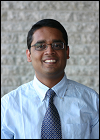 |
Speaker: Ekram Hossain, University of Manitoba, Winnipeg, Canada
Bio: Ekram Hossain is currently a Professor in the Department of Electrical and Computer Engineering at University of Manitoba, Winnipeg, Canada. His current research interests include resource allocation and medium access control in wireless networks, small cell networks, and cognitive, cooperative, and green wireless systems. He has authored/edited several books in these areas (http://www.ee.umanitoba.ca/~ekram). Dr. Hossain has won several research awards including the University of Manitoba Merit Award in 2010 (for Research and Scholarly Activities), the 2011 IEEE Communications Society Fred Ellersick Prize Paper Award, and the IEEE Wireless Communications and Networking Conference 2012 (WCNC'12) Best Paper Award. Currently her serves as the Editor-in-Chief of the IEEE Communications Surveys and Tutorials and and Editor for the IEEE Journal on Selected Areas in Communications - Cognitive Radio Series and IEEE Wireless Communications. Dr. Hossain served as the Area Editor for the IEEE Transactions on Wireless Communications and an Editor for the IEEE Transactions on Mobile Computing. He presented tutorials on different emerging wireless communications technologies in IEEE conferences including IEEE ICC'12, Globecom'11, PIMRC'11, ICC'10, ICC'09, VTC'08-Fall, Globecom'07, and IEEE WCNC'07. He is a Distinguished Lecturer of the IEEE Communications Society for the term 2012-2013. Dr. Hossain is a registered Professional Engineer (P.Eng.) in the province of Manitoba, Canada.
|
Back to Top
Sunday, 9 June 2013
14:00 – 17:30
T1: Foundations of Network Localization and Navigation
Network localization and navigation give rise to a new paradigm for communications and contextual information collection, enabling a variety of diverse new applications that rely on position information of mobile nodes. These applications include logistics, security tracking, medical services, search and rescue operations, control of home appliances, automotive safety, and military systems, as well as many wireless sensor network applications. The coming years will see the emergence of techniques for high-definition location-awareness (HDLA) with sub-meter accuracy and minimal infrastructure requirements, operational in challenging indoor and harsh environments. Therefore, it becomes necessary for researchers in communications to be aware of both the fundamentals and the state of the art in location-aware networks. This tutorial will first cover four basic components of traditional positioning: fundamental performance bounds; ranging techniques; positioning algorithms; and network experimentation in real environments. Secondly, we will discuss the limitations of traditional positioning, and move on to the key enablers for HDLA: wideband transmission and cooperative processing. This tutorial is aimed at students and practicing engineers in order to provide this knowledge in a rigorous, yet concise form.
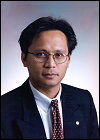 |
Speaker: Moe Z. Win, Massachusetts Institute of Technology, USA
Bio: Moe Win is a Professor at the Massachusetts Institute of Technology (MIT). Prior to joining MIT, he was at AT&T Research Laboratories and at the Jet Propulsion Laboratory. His research encompasses fundamental theories, algorithm design, and experimentation for a broad range of real-world problems. His current re search topics include network localization and navigation, network interference exploitation, intrinsic wireless secrecy, adaptive diversity techniques, and ultra-wide bandwidth systems. Professor Win is an elected Member-at-Large on the IEEE Communications Society Board of Governors (2011−2013). He was the chair for the IEEE Communications Society Radio Communications Committee (2004−2006). He served as an Editor (2006–2012) for IEEE TRANSACTIONS ON WIRELESS COMMUNICATIONS, as well as Area Editor (2003−2006) and Editor (1998−2006) for the IEEE TRANSACTIONS ON COMMUNICATIONS. He was honored with two IEEE Technical Field Awards: the IEEE Kiyo Tomiyasu Award and the IEEE Eric E. Sumner Award. He received several recognitions, including the Copernicus Fellowship, the Royal Academy of Engineering Distinguished Visiting Fellowship, the Fulbright Fellowship, the Laurea Honoris Causa from the University of Ferrara, and the U.S. Presidential Early Career Award for Scientists and Engineers. Professor Win is elected Fellow of the AAAS, the IEEE, and the IET, and was an IEEE Distinguished Lecturer.
|
Back to Top
Sunday, 9 June 2013
14:00 – 17:30
T6: Cartography for Cognitive Networks
Communication networks have evolved from specialized, research and tactical transmission systems to large-scale and highly complex interconnections of intelligent devices, increasingly becoming more commercial, consumer-oriented, and heterogeneous. Propelled by emergent social networking services and high-definition streaming platforms, network traffic has grown explosively thanks to the advances in processing speed and storage capacity of state-of-the-art communication technologies. As "netizens" demand a seamless networking experience that entails not only higher speeds, but also resilience and robustness to failures and malicious cyber-attacks, ample opportunities for signal processing (SP) research arise. The vision is for ubiquitous smart and cognitive network devices to enable data-driven statistical learning algorithms for distributed, robust, and online network operation and management, adaptable to the dynamically-evolving network landscape with minimal need for human intervention. The present tutorial aims at delineating the analytical background and relevance of SP tools to dynamic network monitoring, introducing the notion of network cartography -- a framework to construct maps of the dynamic network state in an efficient and scalable manner tailored for large-scale cognitive networks.
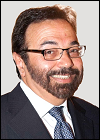 |
Speaker: G. B. Giannakis University of Minnesota, USA
Bio: G. B. Giannakis (Fellow'97) received his Diploma in Electrical Engr. from the Ntl. Tech. Univ. of Athens, Greece, 1981. From 1982 to 1986 he was with the Univ. of Southern California (USC), where he received his MSc. in Electrical Engineering, 1983, MSc. in Mathematics, 1986, and Ph.D. in Electrical Engr., 1986. Since 1999 he has been a professor with the Univ. of Minnesota, where he now holds an ADC Chair in Wireless Telecommunications in the ECE Department, and serves as director of the Digital Technology Center. His general interests span the areas of communications, networking and statistical signal processing - subjects on which he has published more than 340 journal papers, 570 conference papers, 20 book chapters, two edited books and two research monographs (h-index 100). Current research focuses on sparsity in signals and systems, wireless cognitive radios, mobile ad hoc networks, wireless sensor, renewable energy, power grid, gene-regulatory, and social networks. He is the (co-) inventor of 21 patents issued, and the (co-) recipient of 8 best paper awards from the IEEE Signal Processing (SP) and Communications Societies, including the G. Marconi Prize Paper Award in Wireless Communications. He also received Technical Achievement Awards from the SP Society (2000), from EURASIP (2005), a Young Faculty Teaching Award, and the G. W. Taylor Award for Distinguished Research from the University of Minnesota. He is a Fellow of EURASIP, and has served the IEEE in a number of posts, including that of a Distinguished Lecturer for the IEEE-SP Society.
|
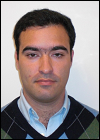 |
Speaker: Gonzalo Mateos, University of Minnesota, USA
Bio: Gonzalo Mateos (M'12) received his B.Sc. degree in Electrical Engineering from Universidad de la Republica (UdelaR), Montevideo, Uruguay in 2005 and the M.Sc. and Ph.D. degrees in Electrical and Computer Engineering from the University of Minnesota, Minneapolis, in 2009 and 2011. Since 2012, he has been a post doctoral associate with the Department of Electrical and Computer Engineering and the Digital Technology Center, University of Minnesota. Since 2003, he is an assistant with the Department of Electrical Engineering, UdelaR. From 2004 to 2006, he worked as a Systems Engineer at Asea Brown Boveri (ABB), Uruguay. His research interests lie in the areas of communication theory, signal processing and networking. His current research focuses on distributed signal processing, sparse linear regression, and statistical learning for social data analysis and network health monitoring.
|
Back to Top
Sunday, 9 June 2013
14:00 – 17:30
T7: Self-Organising Networks (SON): From Conception to Realisation
The increasing complexity and heterogeneity of emerging cellular systems, coupled with decreasing per-bit revenues, have made a strong case for Self-Organizing Networks (SON). Indeed, achieving and maintaining optimal performance in future cellular systems is turning virtually impossible with manual configuration, optimisation and maintenance due to the increasing of parameters involved and human error, latency and accuracy limitations. SON has emerged as a paradigm that can reduce OPEX and CAPEX while yielding optimal performance iGR forecasts $2.34billion and $4.5billion savings in LTE CAPEX and OPEX respectively, with full SON implementation, by 2016 in the US alone.
This tutorial will thus first introduce SON by looking at its emergence, prevalent definitions, use cases, desired characteristics and suitable taxonomies. Later we will analyze what has been achieved in literature on SON to date, including latest standardization activities and industrial progress. This will be followed by engaging technical discussion on a set of selected SON solutions, with the objective to provide deeper understanding of design processes of SON and its potential gains. The tutorial will be concluded with a comprehensive review of open research challenges; thereby, we will also examine suitability of various techniques, ranging from deterministic tools to evolutionary heuristics, to address various SON challenges.
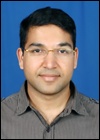 |
Speaker: Ali Imran, Qatar Mobility Innovations Center, Qatar
Bio: Ali Imran is now a Research Scientist at Qatar Mobility Innovations Center (QMIC), Qatar, since Nov-2011 where he is leading internationally collaborative research projects on SON and wireless access technologies. Prior to that, since Jan-2007 he was working in Center for Communication Systems Research at University of Surrey, UK, where he has contributed to various EU projects such as DYVINE, the SON theme of the ATC-India UK framework and BeFemto. From Nov-2005 to Jan-2007 he worked as BS deployment team leader and RF optimization consultant for a major cellular operator in the country. He received his BSc in Elect Engineering in 2005 from University of Engineering and Technology, Lahore, Pakistan. He received his MSc in Mobile and Satellite Communication Engineering with distinction and PhD with thesis titled, ‘Self Organization in Future Wireless Networks’, both from university of Surrey, UK, in 2007 and 2011 respectively. His research interests include radio resource management, SON and heterogeneous networks. In past three years he has won over $1million in highly competitive research grants and as first author has published over a dozen technical journal and conference papers in this area. He is a member of IEEE and Associate fellow of Higher Education Academy, UK.
|
| |
|
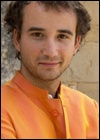 |
Speaker: Mischa Dohler, CTTC, Spain
Bio: Mischa Dohler is now Coordinator of Research at CTTC, Barcelona. He is Distinguished Lecturer of IEEE ComSoc, Senior Member of the IEEE, and Editor-in-Chief of ETT. He frequently features as keynote speaker and panellist. He had press coverage by BBC and Wall Street Journal. He is a tech company investor and entrepreneur, being the co-founder, former CTO and now board member of Worldsensing. He is fluent in 6 languages. Within MVCE, he has pioneered cooperative space-time systems, dating back to 1999 and holding some early key patents. He has published more than 150 journal/conference papers at a citation h-index of 30, holds a dozen patents, authored, co-edited and contributed to 19 books, has given more than 30 tutorials, and participated in ETSI, IETF and other standardisation activities. He has been TPC member and co-chair of various conferences. He is/has been holding various editorial positions for numerous IEEE and non-IEEE journals and special issues. Since 2008 he has been with CTTC and from 2010-2012 the CTO of Worldsensing. From 2005 to 2008, he has been Senior Research Expert in the R&D division of France Telecom, France. From 2003 to 2005, he has been lecturer at King's College London, UK.
|
Back to Top
Sunday, 9 June 2013
14:00 – 17:30
T9: Power Line Communications: Modeling, Algorithms and Applications
This tutorial covers recent advances in Power line communication (PLC) which is a technology that exploits the power delivery network for information delivery. An overview of the various application scenarios of PLC such as in-home, in-vehicle, and smart grids will be provided. I will then discuss the important topics of channel and noise characterization and report up-to-date results about statistical channel modeling, MIMO channel modeling and noise/disturbance modeling. Similarities and differences with the wireless channel behavior will be discussed.
The main challenges of physical layer design for both narrow-band (NB-PLC) and broad-band PLC (BB-PLC) to encompass the presence of channel attenuation and frequency selectivity, interference, and various noise sources will be addressed. In particular, I will describe existing and emerging single carrier modulation approaches, filter bank modulation approaches (as OFDM, DWMT, FMT) and ultra-wide band techniques. We will show that advanced modulation techniques, combined with coding and smart resource allocation algorithms are required to grant robust performance and coexistence with other technologies. The pros and cons of different transmission techniques will be discussed and specific aspects that differentiate PLC from wireless communications will be emphasized.
I will also briefly discuss MAC protocols, adaptive scheduling and cooperative techniques (as relaying) for both home and smart grid PLC networks. Finally, an overview of the main standards will be offered covering NB-PLC, BB-PLC and their role in the Smart Grid.
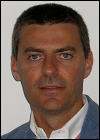 |
Speaker: Andrea Tonello, Professor, University of Udine, Italy
Bio: is an Aggregate Professor at the University of Udine, Italy (since 2003) where he leads the Wireless and Power Line Communication Lab. He is also the founder and president of WiTiKee a university spin-off company. From 1997 to 2002 he has been with Bell Labs Lucent Technologies firstly as a Member of Technical Staff and then as a Technical Manager, at the Advanced Wireless Technology Laboratory, Whippany, NJ, and the Managing Director of the Bell Labs Italy division. He obtained the Laurea degree (1996) and the Doctor of Research degree in electronics and telecommunications (2003) from the University of Padova, Italy. Dr. Tonello received several awards among which the Lucent Bell Labs Recognition of Excellence award (2003) and the EURASIP Journal on Advances in Signal Processing Best Paper Award about power line communications (2007). He was awarded the Distinguished Visiting Fellowship from the Royal Academy of Engineering, UK, (2010) and the Distinguished Lecturer Award by the IEEE Vehicular Technology Society (2011-2013). He serves as an Associate Editor for the IEEE Transactions on Vehicular Technology and for the IEEE Transactions on Communications. He is the Vice-chair of the IEEE Communications Society Technical Committee on Power Line Communications. Web site: www.diegm.uniud.it/tonello
|
Back to Top
Sunday, 9 June 2013
14:00 – 17:30
T10: Energy Harvesting Wireless Communications
Wireless communication networks composed of devices that can harvest energy from nature represent the green future of wireless. Energy harvesting technologies offer the possibility of perpetual operation and no adverse effects on the environment. By developing effective and robust communication techniques to be used under energy harvesting conditions, some of the communication devices and networks can be taken off the power grid, thereby decreasing the overall consumption of energy and the accompanying carbon footprint in the future, by a non-negligible amount. Energy harvesting brings new dimensions to communication system design in the form of randomness and intermittency of available energy, as well as additional system issues to be concerned about such as energy storage capacity and processing complexity. The goal of this tutorial is to furnish the audience with fundamental design principles of energy harvesting wireless communication networks, building on a foundation of energy efficient communications and these new ingredients that provide design insights specific to this emerging topic. The focus will be on physical and medium access layers incorporating the state of research.
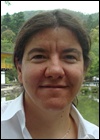 |
Speaker: Sennur Ulukus, University of Maryland, USA
Bio: Sennur Ulukus is a Professor of Electrical and Computer Engineering at the University of Maryland at College Park, where she also holds a joint appointment with the Institute for Systems Research (ISR). Prior to joining UMD, she was a Senior Technical Staff Member at AT&T Labs-Research. She received her Ph.D. degree in Electrical and Computer Engineering from Wireless Information Network Laboratory (WINLAB), Rutgers University, and B.S. and M.S. degrees in Electrical and Electronics Engineering from Bilkent University. Her research interests are in wireless communication theory and networking, network information theory for wireless communications, signal processing for wireless communications, information-theoretic physical-layer security, and energy-harvesting communications.
Dr. Ulukus received the 2003 IEEE Marconi Prize Paper Award in Wireless Communications, a 2005 NSF CAREER Award, the 2010-2011 ISR Outstanding Systems Engineering Faculty Award, and the 2012 George Corcoran Education Award. She served as an Associate Editor for IEEE Transactions on Information Theory and IEEE Transactions on Communications. Recently, she served as a Guest Editor for the Journal of Communications and Networks for the special issue on energy harvesting in wireless networks. She served as TPC co-chair of communication theory and wireless communications symposia, and multiple access track at IEEE ICC, Globecom and WCNC.
|
| |
|
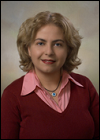 |
Speaker: Prof. Aylin Yener, Penn State University
Bio:
Aylin Yener received B.Sc. degrees with honors in electrical and electronics engineering, and in physics, from Bogazici University, Istanbul, Turkey, and the M.S. and Ph.D. degrees in electrical and computer engineering from the Wireless Information Network Laboratory (WINLAB), Rutgers University, NJ. She was P.C. Rossin Assistant Professor of Electrical Engineering and Computer Science at Lehigh University, PA in 2001. In 2002, she joined the faculty of The Pennsylvania State University, University Park, where she was an Assistant Professor, then Associate Professor, and is currently Professor of Electrical Engineering since 2010. During the academic year 2008-2009, she was a Visiting Associate Professor of Electrical Engineering at Stanford University, CA. Her research interests are in the broad areas of wireless communication theory, information theory, and network science, with recent emphasis on green communications and information security. She is a recipient of the NSF CAREER
award in 2003.
Dr. Yener previously served as Technical Program Chair in various symposia, workshop, and tracks of the IEEE Communications Society, as well as on the editorial boards of Transactions on Wireless Communications and Transactions on Communications. She currently serves on the board of governors of the IEEE Information Theory Society as its Treasurer.
|
Back to Top
Thursday, 13 June 2013
09:00 – 12:30
T11: Designing Intelligent Energy Harvesting Communication Systems
Devices powered by energy harvesting (EH) are increasingly being deployed in practice, in place of their traditional, battery-operated counterparts, when factors such as the sheer number of nodes or inaccessibility render battery replacement difficult and cost-prohibitive. Their deployment spans the whole gamut of autonomous networked systems: from machine-to-machine and sensor networks, to smart buildings and grid asset monitoring. It is no surprise that the global EH market is rapidly expanding: it is expected to reach 1894.87 million dollars by 2017 at an estimated annual growth rate of 24.31%.
Moreover, the interest of the communications and networking research community on EH technologies has steadily been growing, as manifested by the ever-increasing number of publications and workshops on this topic. In contrast to battery-operated devices, where minimizing energy consumption is crucial to prolong lifetime, in EH-powered devices, the objective is the intelligent management of the harvested energy to ensure long-term, uninterrupted operation.
This tutorial will provide a comprehensive overview of recent developments in the design of energy management policies for EH communication systems. We focus on analytical models that capture the main challenges related to their design: the intermittent nature of harvested energy, the limited capacity and energy leakage in energy storage devices, and the constraints on device size and complexity. We will describe analytical tools from communication theory, Markov decision processes and learning theory which are employed to characterize the optimal policies, and to evaluate the performance of low-complexity, near-optimal policies. The tutorial will examine in detail single-link and multi-link networks and explore the implications of EH on their performance.
 |
Speaker: Kostas Stamatiou, CTTC, Spain
Bio: Kostas Stamatiou received his Diploma in Electrical and Computer Engineering from the National Technical University of Athens in 2000 and the M.Sc. and Ph.D. degrees in Electrical Engineering in 2004 and 2009, respectively, from the University of California San Diego. From 2009 to 2010 he was a post-doctoral scholar in the Department of Electrical Engineering at the University of Notre Dame, South Bend, Indiana, and from 2010 to 2012 he held a research appointment at the Department of Information Engineering at the University of Padova, Italy. He currently holds a Research Associate position at the Centre Tecn\`{o}logic de Telecomunicacions de Catalunya (CTTC), Barcelona, Spain. His research interests lie in the areas of communication theory, stochastic geometry and random networks, and stochastic control as applied to the design of EH systems. Dr. Stamatiou received the California Institute of Telecommunications and Information Technology Fellowship (CalIT2) in 2002 and the Marie Curie Fellowship in 2010. He has served as TPC member for the Communication Theory Symposium of the IEEE International Conference on Communications (ICC), and as reviewer for the IEEE Transactions on Communications, IEEE Transactions on Wireless Communications, IEEE Journal on Selected Areas in Communications and the IEEE Communications Letters.
|
| |
|
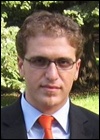 |
Speaker: Deniz Gunduz, Imperial College London, UK
Bio: Deniz Gunduz received the B.S. degree in electrical and electronics engineering from the Middle East Technical University in 2002, and the M.S. and Ph.D. degrees in electrical engineering from Polytechnic Institute of New York University, Brooklyn, NY in 2004 and 2007, respectively. Dr. Gunduz is currently a Lecturer (Assistant Professor) in the Electrical and Electronic Engineering Department at Imperial College, London. Between 2009 and 2012 he has been a Research Associate at CTTC in Barcelona, Spain. From 2007 until 2009 he was jointly appointed as a consulting Assistant Professor at the Department of Electrical Engineering, Stanford University, CA, and as a postdoctoral Research Associate at the Department of Electrical Engineering, Princeton University, NJ. His research interests lie in the areas of communication theory, information theory and networking, with special emphasis on joint source-channel coding, cooperative communications and energy efficiency. Dr. Gunduz is the recipient of a Marie Curie Reintegration Grant funded by the European Union, the 2008 Alexander Hessel Award of Polytechnic Institute of New York University given to the best PhD Dissertation, and a recipient of the Best Student Paper Award at the 2007 IEEE International Symposium on Information Theory (ISIT). He is the guest editor of the EURASIP Journal on Wireless Communications and Networking, Special Issue on Recent Advances in Optimization Techniques in Wireless Communication Networks. He served as a Technical Program Co-Chair for the Transmission Technologies Track of the IEEE Vehicular Transmission Conference (VTC) Fall 2011, and as the Technical Program Co-Chair for the Communication Theory Symposium of the IEEE International Conference on Wireless Communications and Signal Processing (WCSP) 2012. He was the Co-Chair of the 2012 European School Information of Theory in Antalya, Turkey.
|
| |
|
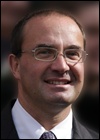 |
Speaker: Michele Zorzi, University of Padova, Italy
Bio: Michele Zorzi (S'89, M'95, SM'98, F'07) was born in Venice, Italy, on December 6th, 1966. He received the Laurea and the PhD degrees in Electrical Engineering from the University of Padova, Italy, in 1990 and 1994, respectively. During the Academic Year 1992/93, he was on leave at the University of California, San Diego (UCSD) as a visiting PhD student, working on multiple access in mobile radio networks. In 1993, he joined the faculty of the Dipartimento di Elettronica e Informazione, Politecnico di Milano, Italy. After spending three years with the Center for Wireless Communications at UCSD, in 1998 he joined the School of Engineering of the University of Ferrara, Italy, where he became a Professor in 2000. Since November 2003, he has been on the faculty at the Information Engineering Department of the University of Padova. His present research interests include performance evaluation in mobile communications systems, random access in mobile radio networks, ad hoc and sensor networks, energy constrained communications protocols, broadband wireless access and underwater acoustic communications and networking. Dr. Zorzi was the Editor-In-Chief of the IEEE WIRELESS COMMUNICATIONS MAGAZINE from 2003 to 2005 and the Editor-In-Chief of the IEEE TRANSACTIONS ON COMMUNICATIONS from 2008 to 2011, and currently serves on the Editorial Board of the WILEY JOURNAL OF WIRELESS COMMUNICATIONS AND MOBILE COMPUTING. He was also guest editor for special issues in the IEEE PERSONAL COMMUNICATIONS MAGAZINE (Energy Management in Personal Communications Systems) IEEE WIRELESS COMMUNICATIONS MAGAZINE (Cognitive Wireless Networks) and the IEEE JOURNAL ON SELECTED AREAS IN COMMUNICATIONS (Multi-media Network Radios, and Underwater Wireless Communications Networks). He served as a Member-at-large of the Board of Governors of the IEEE Communications Society from 2009 to 2011.
|
Back to Top
Thursday, 13 June 2013
09:00 – 12:30
T12: Network Processing with Bayesian Graphical Models
Bayesian graphical models, such as factor graphs, are gaining increasing importance in the systematic development of algorithms in communication receivers and communication networks. Recent developments have revealed ties between graphical models, variational methods, and convex optimization. Most of these developments originate from the machine learning and statistics communities, and there is a need for communications researchers to become aware of these developments and apply state-of-the-art inference methods to important problems in our own field. This tutorial strives to address this need. It provides an overview of the theory behind graphical models and explores deeper connections between different algorithms. Particular emphasis will be placed on the application of graphical models in network problems, where nodes, through limited information sharing, solve a common problem. The theory will first be applied to a centralized problem (data detection in a receiver), and to a number of distributed problems (tracking, network synchronization, beamforming). This tutorial is suitable for graduate students, practicing engineers active in algorithm design, and faculty interested in learning about this modern inference tool. The tutorial will contain hands-on examples to maximize learning and to allow attendees to apply the knowledge from this tutorial to solve problems in their own research fields.
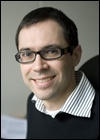 |
Speaker: Henk Wymeersch, Chalmers University of Technology, Sweden
Bio: Henk Wymeersch is Associate Professor with the Department of Signals and Systems at Chalmers University of Technology, Sweden. Prior to joining Chalmers, during 2006-2009 he was a Postdoctoral Associate with the Laboratory for Information and Decision Systems (LIDS) at the Massachusetts Institute of Technology (MIT). Henk Wymeersch obtained the Ph.D. degree in Electrical Engineering/Applied Sciences in 2005 from Ghent University, Belgium. He is a member of the IEEE, Associate Editor for IEEE Communication Letters and author of the book Iterative Receiver Design (Cambridge University Press, 2007). His current research interests include algorithm design for wireless transmission, statistical inference, and distributed processing. His accolades include several best paper awards, the Alcatel-Bell Scientific Award, and a 2011 IEEE ComSoc Young Researcher Award (runner-up).
|
Back to Top
Thursday, 13 June 2013
09:00 – 12:30
T13: Coordinated Multi-Point in Cellular Networks: From Theoretical Gains to Realistic Solutions and Their Potentials
Spectral efficiency of cellular networks is impaired by inter-cell interference which is avoided in current systems by under-utilizing the time/frequency/spatial degrees of freedom. An alternative solution for combating inter-cell interference in future cellular networks is the coordination and joint signal processing of multiple base stations, referred to Coordinated Multi-Point (CoMP). The great potential of CoMP for cellular networks has been verified by theoretical research. However, the introduction of CoMP techniques into cellular communication standards has turned out to be everything but smooth. Apparently, a simple overlay of CoMP on top of current deployments does not bring the aspired gains. This sparked research on the challenges that are faced when bringing CoMP to practice. This tutorial will span the bridge from theoretical gains to practical solutions in a conceptual framework that includes all important physical and MAC layer aspects, and we show how the presented solutions could be included in 3GPP/LTE where aspects such as backward compatibility are considered. The performance of these solutions is verified by a mix of system simulations and measurements in a large urban cellular test bed. The significance of the solutions is demonstrated by a comparison with 3GPP/LTE Release 11.
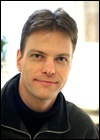 |
Speaker: Tommy Svensson, Chalmers University of Technology, Sweden
Bio: Tommy Svensson is Associate Professor in Communication Systems at Chalmers University of Technology, Gothenburg, Sweden. He has participated in the EU FP6 WINNER and WINNER II projects, which contributed substantially to 3GPP LTE development, as well as in the CELTIC WINNER+ project, the recently completed EU FP7 ARTIST4G project, and the emerging EU FP7 METIS project targeting solutions for the year 2020. He is also the initiator of a Swedish-Chinese project on IMT-Advanced and Beyond, involved in a national academic collaboration project on future wireless access, and he has been leading a recently completed project on microwave backhauling in collaboration with national industry. His main expertise is in design and analysis of physical layer algorithms, multiple access schemes, coordinated multipoint schemes, as well as moving relays for wireless access and wireless backhaul networks, but he also has industrial experience of higher layer design for wireless communication systems. He has co-authored two books and more than 70 journal and conference papers. He is a Senior Member of the IEEE, chairman of the awards winning IEEE Sweden VT/COM/IT chapter, and coordinator of the Communication Engineering Master’s Program at Chalmers.
|
| |
|
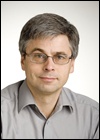 |
Speaker: Mikael Sternad, Uppsala University, Sweden
Bio: Mikael Sternad is Professor of Automatic Control at Uppsala University and received a PhD degree from Uppsala University in the same field in 1987. With a background in robust and adaptive estimation, control and filtering, he has lead of the national Swedish projects Wireless IP and is at present leading the Dynamic Multipoint Wireless Access framework project funded by the Swedish Research Council. He has participated in the EU WINNER, WINNER II and ARTIST4G integrated projects, contributing to channel prediction and estimation, adaptive transmission, design of robust linear precoders, deployment concepts, multiple access techniques/concepts, MAC layer design and overall system design. Mikael Sternad has authored around 130 papers, 6 book chapters and 10 patents.
|
| |
|
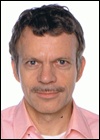 |
Speaker: Wolfgang Zirwas, Siemens, Germany
Bio: Wolfgang Zirwas received his diploma degree in communication technologies in 1987 from technical university of Munich. In 1987 he started at Siemens Munich central research lab for communication. Since 1996 he has been involved – partly as project manager - in BMB+F and EU funded projects like ATMmobil, COVERAGE, 3GET, Scalenet, WINNER, ARTIST4G, etc. including topics like e.g. multihop, MIMO, cooperative antennas and OFDM. End 2004 he was project manager for the world record achieving 1Gbit/s MIMO OFDM Experimental mobile radio system extended in 2007 to a virtual MIMO demonstration. From 2006 to 2007 he joined 3GPP LTE Release 8 MIMO standardization meetings. Since 2010 he developed an interference mitigation framework for ARTIST4G resulting in a best paper award at FuNeMs 2012 for ‘Interference Avoidance Techniques for Improving Ubiquitous User Experience’, by N. GRESSET, H. HALBAUER, J. KOPPENBORG, W. ZIRWAS, H. KHANFIR. He is – beside many Journals and conference papers - co-author of four books. He received the Siemens and NSN ‘Inventor of the year’ award in 1997, 2007, 2008 and 2009. He was TCP of several conferences like European Wireless, PIMRC or WDN-CN2012 and is Editor of the Scientific World Journal.
|
| |
|
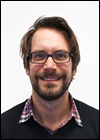 |
Speaker: Michael Grieger, Vodafone Chair Mobile Communications Systems, Germany
Bio: Michael Grieger received his Dipl.-Ing. from DHBW Stuttgart in 2005 and his M.Sc. from the Technische Universität Dresden in March 2009. In 2008, funded by the Herbert Quandt/ALTANA foundation, he studied at CTU, Prague. During his Master's thesis, he conducted research in Prof. John Cioffi's group at Stanford University on multi-cell signal processing, which continues to be his major research focus today as a PhD student supervised by Prof. Fettweis at the Vodafone Chair Mobile Communications Systems in Dresden. An aspect of his research is the comparison of information theoretic results to those of the “real world” using field trials. Michael Grieger led the work package on lab and field trial measurements in the integrated EU project ARTIST4G
|
Back to Top
Thursday, 13 June 2013
09:00 – 12:30
T14: Vehicular Networking: Standards, Protocols, Applications, and Deployment Plans
Vehicular networking serves as one of the most important enabling technologies required to implement a myriad of applications related to vehicles, vehicle traffic, drivers, passengers and pedestrians providing information to support driving safety as well as convenience. Much progress has been achieved in this area during the past decade. Very large projects to validate the theoretical work by field tests have been initiated and protocols are being standardized. In this tutorial, we will look into applications and use cases of vehicular networking followed by an overview of the standardization activities. Next we cover the communication protocol design as well as the deployment plans. We will also briefly talk about performance evaluation of various protocol designs. Finally, we will conclude with open issues that require further research.
 |
Speaker: Onur Altintas, Toyota InfoTechnology Center, Co. Ltd, Japan
Bio: Onur Altintas is a principal researcher at the R&D Group of Toyota InfoTechnology Center, Co. Ltd, in Tokyo. From 1999 to 2001 he was with Toyota Motor Corporation and from 2001 to 2004 he was with Toyota InfoTechnology Center USA, and was also a visiting researcher at Telcordia Technologies between 1999 and 2004. Before joining Toyota Motor Corporation in 1999, he was a research scientist at Ultra High Speed Network and Computer Technology Labs (UNCL), Tokyo. Dr. Altintas received his B.S. and M.S. degrees from Orta Dogu Teknik University, Ankara, Turkey, and his Ph.D. degree from the University of Tokyo, Japan; all in electrical engineering. He is the co-founder and general co-chair of the IEEE Vehicular Networking Conference (IEEE VNC) held in Tokyo, New Jersey, Amsterdam and Seoul between 2009-2012. He also served as a guest editor for special issues on Vehicular Communications for IEEE Wireless Communications Magazine and EURASIP Journal on Wireless Communications and Networking and as Track Chair of Vehicular Electronics and Telematics (IEEE VTC-Spring). He is an IEEE VTS Distinguished Lecturer.
|
| |
|
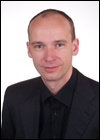 |
Speaker: Falko Dressler, University of Innsbruck, Austria
Bio: Falko Dressler is a Full Professor of Computer Science heading the Computer and Communication Systems Group at the Institute of Computer Science, University of Innsbruck. He teaches on self-organizing sensor and actor networks, network security, and communication systems. Dr. Dressler received his M.Sc. and Ph.D. degree from the Dept. of Computer Science, University of Erlangen in 1998 and 2003, respectively. Dr. Dressler is an Editor for journals such as Elsevier Ad Hoc Networks, ACM/Springer Wireless Networks (WINET), and Elsevier Nano Communication Networks. He was guest editor of special issues on self-organization, autonomic networking, and bio-inspired computing and communication for IEEE Journal on Selected Areas in Communications (JSAC), Elsevier Ad Hoc Networks, and others. Besides acting as TPC chair for a number of high-profile conferences and workshops, he regularly acts in the TPC of leading networking conferences such as IEEE INFOCOM, IEEE ICC, IEEE Globecom, and IEEE WCNC. Among other, Dr. Dressler wrote the textbooks Self-Organization in Sensor and Actor Networks, published by Wiley in 2007. Dr. Dressler is an IEEE Distinguished Lecturer in the fields of inter-vehicular communication, self-organization, and bio-inspired networking. Dr. Dressler is a Senior Member of the IEEE (COMSOC, CS, VTS) as well as a Senior Member of ACM (SIGMOBILE).
|
Back to Top
Thursday, 13 June 2013
09:00 – 12:30
T15: “Do-It-Yourself” Spectrally Agile Waveform Design: Implementing Dynamic Spectrum Access in 24 Hours
In this half-day tutorial, the instructors will present several approaches for implementing spectrally agile waveforms using a multicarrier data transmission framework in order to enable dynamic spectrum access within a wireless environment. In addition to the theoretical aspects of spectrally agile waveform design being provided during this tutorial, the instructors will also provide several practical insights on this topic by introducing to the audience a “hands-on” experience with respect to the implementation of these waveforms using software-defined radio (SDR) technology. Leveraging several pre-recorded video demonstrations of SDR experiments involving spectrally agile waveforms, the instructors will provide the tutorial audience with a first-hand experience regarding the design of these waveforms, as well as expose them to some of the key technical challenges associated with spectrally agile waveforms. This tutorial consists of four components, namely: (1) A brief introduction to Dynamic Spectrum Access (DSA); (2) An overview of multicarrier transmission fundamentals, including the spectrally agile variant known as NC-OFDM; (3) A description of several practical considerations for spectrally agile transmission; (4) Several video demonstrations of actual spectrally agile waveform implementations using SDR technology.
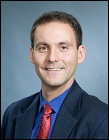 |
Speaker: Alexander M. Wyglinski, Worcester Polytechnic Institute, USA
Bio: Alexander M. Wyglinski is an Associate Professor of Electrical and Computer Engineering at Worcester Polytechnic Institute (WPI) and Director of the Wireless Innovation Laboratory (WI Lab). He received his Ph.D. degree from McGillUniversity in 2005, his M.Sc.(Eng.) degree from QueensUniversity at Kingston in 2000, and his B.Eng. degree from McGillUniversity in 1999, all in electrical engineering. He has published in over 100 peer-reviewed technical publications throughout his academic career. Professor Wyglinski is a Senior Member of the IEEE, IEEE Communications Society, IEEE Signal Processing Society, IEEE Vehicular Technology Society, IEEE Women in Engineering, Sigma Xi, and Eta Kappa Nu. His current research interests are in the areas of wireless communications, wireless networks, cognitive radios, software-defined radios, transceiver optimization algorithms, dynamic spectrum access networks, spectrum sensing techniques, machine learning techniques for communication systems, and signal processing techniques for digital communications.
|
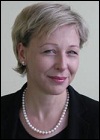 |
Speaker: Hanna Bogucka, Poznan University of Technology, Poland
Bio: received the M.Sc. and the Ph.D. degrees in Telecommunications from Poznan University of Technology (PUT), Poznan, Poland in 1988 and 1995 respectively. In 2006 she received the Doctor Habilitus degree from PUT. Since 1988 she has been employed at the Institute of Electronics and Telecommunications at PUT, currently as a professor at PUT and a deputy-Dean for Science at a Faculty of Electronics and Telecommunication. Prof. Hanna Bogucka is involved in the research activities in the area of wireless communications, in particular system design (including physical-layer design and radio resource management) and algorithms to provide reliable transmission of digital signals over dispersive radio channels, satisfying user’s demands for the Quality of Service and system flexibility. Prof. Bogucka is the author of over 60 papers, including 3 handbooks (about 120 pages each) in the area of radio communications and digital signal processing.
|
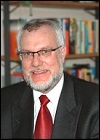 |
Speaker: Friedrich K. Jondral, Karlsruhe Institute of Technology, Germany
Bio: Friedrich K. Jondralreceived a Diploma in mathematics and a Doctoral degree in natural sciences (Dr.rer.nat.) from the TechnischeUniversitätBraunschweig (Germany) in 1975 and 1979, respectively. Dr. Jondralis currently a Full Professor and Director of the Communications Engineering Lab at the Karlsruhe Institute of Technology. He has also served as the Dean of the Department of Electrical Engineering and Information Technology from 2000 to 2002. His current research interests are in the fields of ultra wideband communications, software defined and cognitive radio, signal analysis, pattern recognition, network capacity optimization and dynamic spectrum allocation. Dr. Jondral authored or co-authored about 250 technical papers and four books. He acted as Technical Program Chair or Co-Chair for several international conferences and is an associate editor of the IEEE Communications Letters as well as of the Frequenz.
|
Back to Top
Thursday, 13 June 2013
09:00 – 12:30
T16: Autonomic Networks, Principles and Implementation for QoS, Security and Energy Savings
We will present the design principles for Autonomic or Self-Aware Networks which measure or observe their own users’ and internal behaviour as well as the external systems that they interact with, in order to modify their own behaviour so as to adaptively achieve certain objectives, such as
- discovering services for their users,
- improving their Quality of Service (QoS),
- reducing their energy consumption,
- compensating for components which fail or malfunction,
- detect and react to intrusions, and
- defend themselves against external attacks.
The study of such networks is part of the field of Autonomic Communications. These systems exploit "self-awareness" within a network of interacting components and sub-systems so as to create a distributed internal representation of the system, coupled with the ability to discover actions that it can take, in the form of paths to destinations and services. The internal representation of the past and present experience of the network includes performance monitoring to provide an evaluation of how well the network is "doing its job", and condition monitoring to evaluate the health, reliability and security of the network, and its level of energy consumption. These features have been implemented within the Cognitive Packet Network (CPN) protocol for packet routing in wired and wireless networks. These concepts have also been generalised to include the use of networks to enhance to enhance human security in emergency environments. The tutorial will include a hands on experiments on wireless interconnected laptops running an autonomic network. Special attention will be addressed to show how the following important considerations can be included in the design of an autonomic communication system: (a) user requirement driven QoS and QoE, (b) respect for SLAs, (c) effecting energy savings through smart adaptive network management, (d) surveillance of the network for security compromises, and investigation tools via honeypots and analytics, (e) adapting reaction against denial of service and other attacks.
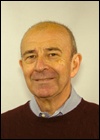 |
Speaker: Erol Gelenbe, Imperial College, UK
Bio: Erol Gelenbe (Imperial College) is a Fellow of IEEE and ACM. He is active in developing the field of autonomic communications and self-aware networks since 1999. His team implemented an autonomic communication system called the Cognitive Packet Network which was deployed on large test-beds. His papers on this topic have appeared in the Proceedings of the IEEE, the Communications of the ACM, and other venues. He received ACM’s 2008 SIGMETRICS Life-time Achievement Award (USA) and the 2010 Institution of Engineering and Technology’s Oliver Lodge Medal (UK).
|
| |
|
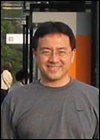 |
Speaker: Ricardo Lent, Imperial College, UK
Bio: Ricardo Lent (Imperial College) is a Research Fellow who has worked in the field of Autonomic Communications since the early 2000’s, and has published numerous related papers. He has been part of the Cognitive Packet Network Team, and his current research includes energy-aware networking.
|
| |
|
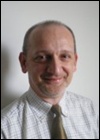 |
Speaker: Antonio Manzalini, Telecom Italia, Italy
Bio: Antonio Manzalini (Telecom Italia) was the leader of the successful EU FP6 CASCADAS project which helped launch the field of Autonomic Communications. He has published extensively in this field and participated in numerous EU projects, and is active in developing advanced concepts in communications. He currently leads the European Institute of Technology’s Action on “Smart Networks at the Edge”.
|
Back to Top
Thursday, 13 June 2013
14:00 – 17:30
T17: Greening the Internet
Energy efficiency is increasingly becoming a key priority for Information and Communication Technology (ICT) organizations given the ecological and economic drivers. In this tutorial we will introduce and discuss a number of measures that can be used to reduce the power consumption in the Internet and will introduce methods for the optimum use of renewable energy in core networks to reduce the Internet’s carbon footprint at a given power consumption level. We will introduce network optimization through the use of mixed integer linear programming (MILP) giving a short tutorial on MILP and build on this and heuristics inspired by it to explore a number of energy and carbon footprint reduction measures including (i) Optimum use of time varying renewable energy in core networks; (ii) Optimum resource allocation and green network design with data centres; (iii) Dynamic energy-efficient content caching for video on demand, YouTube type content and IPTV (iv) Energy-efficiency through data compression; (v) Energy-efficient peer-to-peer content distribution (vi) Physical topology design considering operational and embodied energies. We finish by outlining future directions and open research issues. This tutorial will be of particular benefit to researchers and practicing engineers interested in energy efficient designs applied to the Internet and broadly.
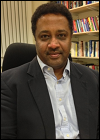 |
Speaker: Jaafar Elmirghani, University of Leeds, UK
Bio: Prof. Jaafar Elmirghani is a Fellow of the IET, Fellow of the Institute of Physics and is the Director of the Institute of Integrated Information Systems and Professor of Communication Networks and Systems within the School of Electronic and Electrical Engineering, University of Leeds, UK. He was Chairman of the IEEE UK and RI Communications Chapter and was Chairman of IEEE Comsoc Transmission Access and Optical Systems Committee and is and has been on the technical program committee of 29 IEEE ICC/GLOBECOM conferences between 1995 and 2012 including ten times as Symposium Chair. Prof. Elmirghani was founding Chair of the first IEEE Comsoc Green Communications track at GLOBECOM 2011. He received the IEEE Communications Society 2005 Hal Sobol award and the 2005 Chapter Achievement award, the University of Wales Swansea inaugural ‘Outstanding Research Achievement Award’, 2006 and the IEEE Communications Society Signal Processing and Communication Electronics outstanding service award, 2009. He is currently an editor of IET Optoelectronics, Co-Chair of the GreenTouch® Wired, Core and Access Networks Working Group. He has published over 350 technical papers, co-edited “Photonic Switching Technology- Systems and Networks”, IEEE Press 1998, and has research interests in communication networks, and optical communication systems.
|
Back to Top
Thursday, 13 June 2013
14:00 – 17:30
T18: OFDM for Optical Communications
Orthogonal Frequency Division Multiplexing (OFDM) for wired and wireless communications has been the subject of intensive research over many years, and is now used in many broadband RF wireless and wired systems. Howeverit is only very recently that OFDM has been considered for optical systems. It is now a ‘hot topic’ in optical communications and optical OFDM is being applied across a range of optical fiber and optical wireless systems, including long haul transmission using single mode optical fiber, optical fiber access networks, plastic optical fiber, and indoor optical wireless systems, including visible light communications. Successful research on the topic of optical OFDM requires detailed knowledge about both OFDM, and about optical systems. This tutorial will provide an introduction to optical OFDM. It will include descriptions of the various forms of optical OFDM that have been developed in the last few years, including coherent optical OFDM (CO-OFDM), direct detection optical OFDM (DDO-OFDM), asymmetrically clipped optical OFDM (ACO-OFDM) and DC biased optical OFDM (DCO-OFDM). The tutorial is designed for an audience coming from either an OFDM or an optical communications background. It will conclude with an overview of current research in the field and a discussion of future research directions.
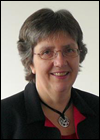 |
Speaker: Jean Armstrong, Monash University, Australia
Bio: Jean Armstrong is a Professor in the Department of Electrical and Computer Systems Engineering at Monash University, Victoria, Australia. Her research interests include digital communications, engineering education, and women in engineering. Most of her recent research in digital communications has been on Orthogonal Frequency Division Multiplexing (OFDM) and she has published many very highly cited papers and has six fully commercialized patents in this field. Her earlier OFDM work was on RF wireless applications, but in 2005, she recognized the potential for applying OFDM to optical communications. Asymmetrically clipped optical OFDM (ACO-OFDM), which forms the basis of one of thesepatents is the most promising modulation technique in the emerging field of visible light communications. Professor Armstrong has been the recipient of numerous awards including induction into the Victorian Honour Roll of Women, the $100,000 Peter Doherty Prize for the best commercialization opportunity in Australia in 2006 for her work on optical OFDM (joint winner), Institution of Engineers, Australia, Engineering 2000 Award, Zonta International Amelia Earhart Fellowship and Caroline Haslett Memorial Scholarship. She is a Fellow of the Institution of Engineers Australia. She is currently a member of the Australian Research Council (ARC) College of Experts.
|
Back to Top
Thursday, 13 June 2012
14:00 – 17:30
T19: Moving Forward in Cellular: Emerging Concepts and Technologies for Beyond-2020 Networks
Despite the recent advances in wireless technologies, the wireless community faces the challenge of enabling a further traffic increase of up to 1,000 times in the next 10 years or so, while no customer is willing to pay more for the wireless pipe itself: the so called “traffic-revenue decoupling”. Moreover, many experts warn that the low-hanging fruits in wireless research (especially in information theory, communications theory, and signal processing) have already been collected. While the research community is full of ideas (as usual), many of these idea are either not-too-relevant (i.e., not in the bottleneck areas) or they are in areas in which progress toward a tangible implementation is too slow.
In this tutorial, I will articulate on the bottleneck problems in beyond-2020 wireless networks, the potential research directions towards coping with these problems, especially in the context of radio access network (RAN), resource allocation, layers 1, 2, and 3, the underlying mathematical tools. In the absence of a clear technology roadmap towards 5G, the tutorial has, to a certain extent, an exploratory view point to stimulate further thinking and creativity. We are certainly at the dawn of a new era in wireless research and innovation; the next twenty years will be very interesting.
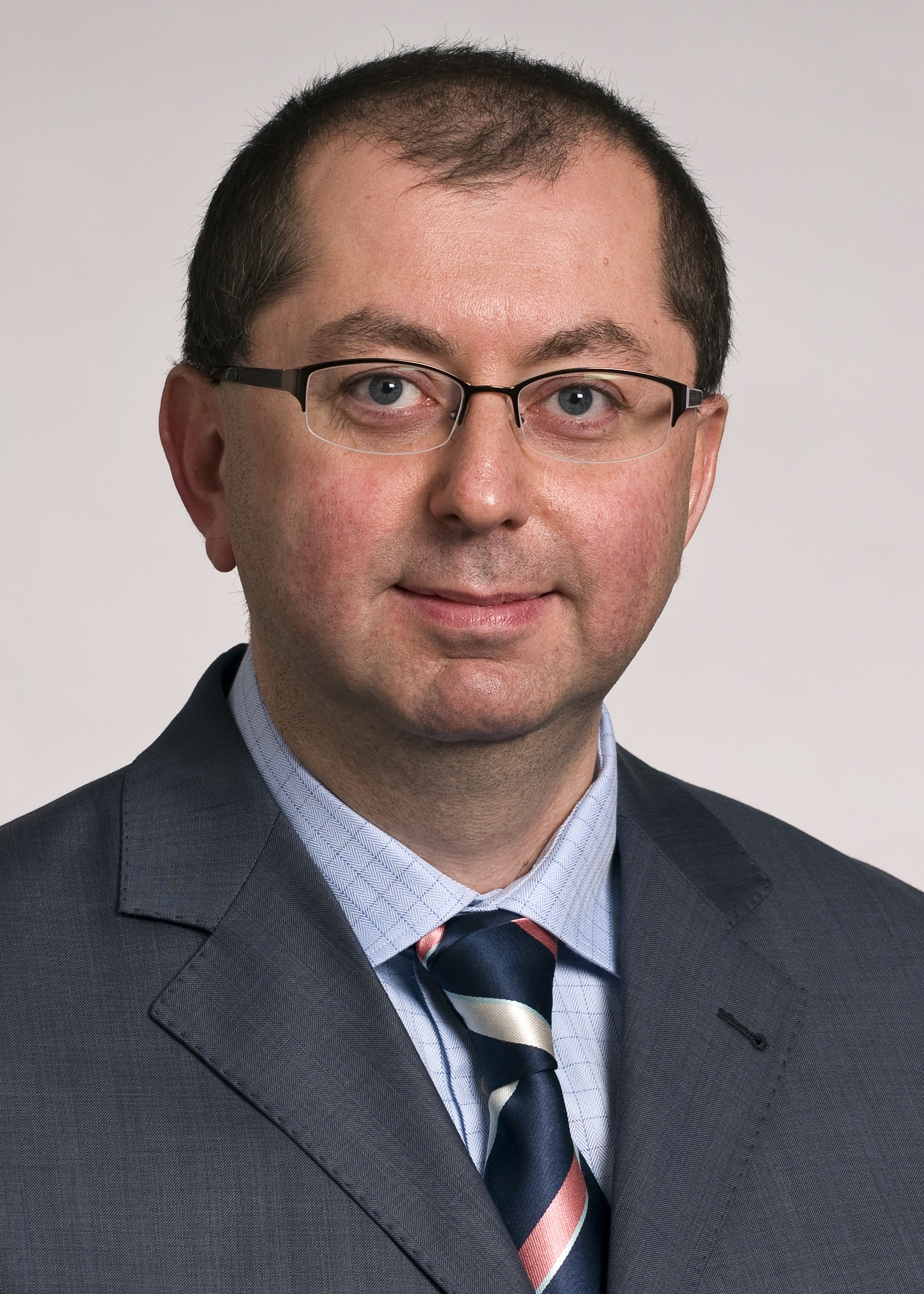 |
Speaker: Halim Yanikomeroglu, Carleton University, Canada
Bio: Halim Yanikomeroglu is a full professor at the Department of Systems and Computer Engineering at Carleton University, Ottawa, Canada. His research interests cover many aspects of wireless technologies with a special emphasis on cellular networks. Dr. Yanikomeroglu coauthored more than 50 journal and 160 conference papers, and has given more than 20 tutorials in leading international conferences on wireless technologies; his papers have received more than 4,500 citations. In recent years, Dr. Yanikomeroglu’s research has been funded by Huawei, RIM, Samsung, Communications Research Centre of Canada (CRC), Telus, and Nortel. This collaborative research resulted in about 15 patent applications. Dr. Yanikomeroglu is a member of the Steering Committee of the IEEE Wireless Communications and Networking Conference (WCNC). He served or will serve as the Technical Program Chair or Co-Chair of WCNC 2004, WCNC 2008, and WCNC 2014. He was the General Co-Chair of the IEEE Vehicular Technology Conference Fall 2010. Dr. Yanikomeroglu has served in the editor boards of IEEE TCOM, IEEE TWC, and IEEE CST. He is a former chair of the IEEE's Technical Committee on Personal Communications (now called, Wireless Technical Committee). Dr. Yanikomeroglu is a recipient of several teaching and research excellence awards. He is a Distinguished Lecturer for the IEEE Vehicular Technology Society.
|
Back to Top
Thursday, 13 June 2012
14:00 – 17:30
T20: Small Cell and HetNet Deployment
Mobile operators have experienced tremendous data traffic increase in recent years. It is predicted that this trend will continue in the next decade. This exponential traffic growth presents a huge challenge to the mobile industry. Small cell deployment is regarded as one of the most promising ways to address this challenge. The deployment of small cell and heterogeneous networks (HetNets) faces many challenges such as interference, mobility management and backhauling, which will be discussed in this tutorial.
The outline of the tutorial is listed as follows:
- Introduction to small cells and HetNets
- Small cell access methods and deployment scenarios
- Small cell and HetNet backhaul
- System-level simulation for small cell and HetNet deployment
- Interference in small cells and HetNets
- Mobility management in small cells and HetNets
- Small cell self-organisation
- Small cell and HetNet deployment tools
- Research topics in small cell and HetNet
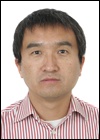 |
Speaker: Jie Zhang, University of Sheffield, UK
Bio: Jie Zhang is a Full Professor and holds the Chair in Wireless Systems at the Communications Group (www.shef.ac.uk/eee/research/cr), the Department of Electronic and Electrical Engineering, the University of Sheffield, UK. His research interests are focused on radio propagation, indoor-outdoor radio network planning and optimisation, small/femto cell, HetNet, self-organising network (SON) and green communications. Since 2006, he has been an Investigator of over 20 research projects worth over £17 million funded by the Engineering and Physical Science Research Council (EPSRC), the European Commission (EC) FP6/FP7 and the industries, including some of the earliest research projects on femto/small cell. He is a lead author of the first technical book on femtocell "Femtocells: Technologies and Deployment" (Wiley, Jan. 2010) and its expanded edition "Small Cells: Technologies and Deployment" (Wiley, Q4 2013). He and his colleagues published one of the most widely cited femtocell papers "OFDMA femtocells: A roadmap on interference avoidance", and some early work in femtocell self-organisation.
|
| |
|
 |
Speaker: David López-Pérez, Bell Labs, Alcatel-Lucent, Ireland
Bio: Dr David López-Pérez is a Research Engineer at the Autonomous Networks and System Research Department at Bell Labs, Alcatel-Lucent, Dublin, Ireland, working on Wireless Networking and Small Cells. Prior to this, David received his Bachelor (BSc) and Master (MSc) degrees in Telecommunication from Miguel Hernandez University, Spain, in Sept. 2003 and Sept. 2006, respectively, and his Doctor in Philosophy (PhD) title from University of Bedfordshire, UK, in April. 2011. From Aug. 2010 until Dec. 2011, David was Research Associate, carrying post-doctoral studies, at the Centre for Telecommunications Research (CTR) at King's College London (KCL), London UK. Moreover, from Feb. 2006 and for a year, he was with Cork Institute of Technology, Ireland, and from Feb. 2005 and for a year, he was with VODAFONE Spain, Spain working at the Radio Frequency Department in the area of network planning and optimization.
|
| |
|
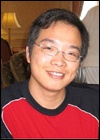 |
Speaker: Hui Song, Ranplan Wireless Network Design Ltd, UK
Bio: Dr Hui Song is currently the R&D Manager at Ranplan Wireless Network Design Ltd. (www.ranplan.co.uk). He contributed significantly to Ranplan’s world leading in-building wireless network design and optimisation tool – iBuildNet®, which is well suited to study femto/small cell deployment, heterogeneous networks (HetNets), smart meter, connected home, and any other in-building network deployment and optimisation.
He received his B.A.Sc in Mathematics from Fudan University in 2005. He obtained his Ph.D in Wireless Communications from the University of Bedfordshire in April 2010. He has published more than 10 papers including five IEEE Transactions papers. He is also a contributor of “System-Level Simulation for Femtocell Scenarios” and “Mobility Management” chapters of the first technical book on femtocells "Femtocell: Technologies and Deployment (Wiley, Jan. 2010)". He is also an author of the forthcoming book "Small Cells: Technologies and Deployment" (Wiley, Q4 2013).
|
| |
|
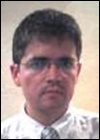 |
Speaker: Guillaume de la Roche, Mindspeed Technologies, France
Bio: Dr. Guillaume de la Roche is a Wireless System Engineer at Mindspeed Technologies. He is based in Sophia Antipolis, France, where Mindspeed European design center is located. Prior to that he was with Infineon (2001-2002, Germany), Sygmum (2003-2004, France), CITI Laboratory (2004-2007, France) and Centre for Wireless Network Design (2007-2011, United Kingdom). He has been as a part time lecturer at Lyon 1 University since 2005. He was also a visiting researcher at DOCOMO-Labs (2010, USA) and Axis Teknologies (2011, USA). He holds a Dipl-Ing from CPE Lyon, and a MSc and Ph.D. from INSA Lyon. He is a coauthor of approx. 60 publications including 3 books. He has been involved in the organizing committee of numerous small cell related events. He was the principal investigator of European FP7 project “CWNetPlan” on combined indoor/outdoor wireless network planning. He is on the editorial board of the Transactions on Emerging Telecommunications Technologies (Wiley).
|
Back to Top
Thursday, 13 June 2012
14:00 – 17:30
T21: From Network based Location Estimation to Location Aided Communications
Recent years have seen an explosion of location based services. On the other hand, the limitations of GPS for indoor, urban canyons etc. have led to an evolution of existing networks (e.g. LTE) to provide network based location estimation. Today’s and future mobile radio devices provide a heterogeneous portfolio of radio access technologies. We provide an overview of recent advances in cooperative communication based location estimation, fingerprinting techniques that also work in non line-of-sight, the exploitation of inertial modalities and self-learning techniques to enable context-aware network adaptions based on inferred radio maps.The availability of location information of mobile terminals, relays, femto/small cells and primary units provides opportunities to greatly enhance the operation of wireless communication systems. We provide an overview of some possibilities, starting with physical layer considerations for a single link. However, most of the opportunities concern resource allocation aspects and network management. Especially for multi-user (e.g. SDMA) and multi-cell (e.g. CoMP) systems. Location aided techniques may furthermore exploit location prediction through mobility trajectory information. This would allow slow fading (and even connectivity) predictability, something that is difficult to achieve without location information.
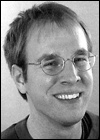 |
Speaker: Ronald Raulefs, German Aerospace Center, Germany
Bio: Ronald Raulefs received the Dipl.-Ing. degree from the University of Kaiserslautern, Germany, in 1999 and the Dr.-Ing. (PhD) degree from the University of Erlangen-Nuremberg, Germany, in 2008. He is working as senior research member and project leader at the Institute of Communications and Navigation of the German Aerospace Center (DLR) in Oberpfaffenhofen, Germany. Ronald Raulefs initiated and lead the EU FP7 project WHERE and is leading the successor project WHERE2 (www.ict-where2.eu) as well as the task on cooperative location and communications in heterogeneous networks. He has set off new workshops in the context of communications and positioning, and served on the organization and technical committees of several international conferences and workshops. He has taught courses on the cooperation between wireless communications and positioning systems. He held tutorials at the VTC’09, Sarnoff Symposium, and other occasions. He authored and co-authored 70+ scientific publications in conferences and journals. He received the best paper award at IEEE ISSSE’04. He holds numerous international patents in the area of mobile communications and radio based positioning. His current research interests include various aspects of mobile radio communications and positioning, such as space-time signal processing, resource allocation, and cooperative positioning.
|
| |
|
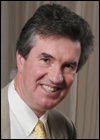 |
Speaker: Dirk T.M. Slock, EURECOM, France
Bio: Dirk T.M. Slock received an engineering degree from the University of Gent, Belgium, and the MSEE, MSc in Statistics, and PhD in EE from Stanford University. In 1989-91, he was a member of the research staff at the Philips Research Laboratory Belgium. In 1991, he joined EURECOM where he is now professor. At EURECOM, he teaches statistical signal processing (SSP) and signal processing techniques for wireless communications. His research interests include SSP for mobile communications (antenna arrays for (semi-blind) equalization/interference cancellation and spatial division multiple access (SDMA), space-time processing and coding, channel estimation, diversity analysis, information-theoretic capacity analysis, relaying, cognitive radio, geolocation), and SSP techniques for audio processing. He invented semi-blind channel estimation, the chip equalizer-correlator receiver used by 3G HSDPA mobile terminals, spatial multiplexing cyclic delay diversity (MIMO-CDD) now part of LTE, and his work led to the Single Antenna Interference Cancellation (SAIC) concept used in GSM terminals. He is the (co)author of around 400 technical papers. He received one best journal paper award from IEEE-SP and one from EURASIP in 1992. He is the coauthor of two IEEE Globecom'98, one IEEE SIU'04 and one IEEE SPAWC'05 best student paper award, and a honorary mention (finalist in best student paper contest) at IEEE SSP'05, IWAENC'06 and IEEE Asilomar'06. He is a Fellow of the IEEE.
|
Back to Top
Thursday, 13 June 2012
14:00 – 17:30
T22: Smart Grid Communications and Networking
The Smart Grid, regarded as the next generation power grid, uses two-way flows of electricity and information to create a widely distributed automated energy delivery network. A smart grid can be decomposed into the smart infrastructure system, smart management system and smart protection system. In this tutorial, we focus on the use of communication and networking technologies for better managing, monitoring and protecting future smart grid. We present both the state-of-the-art practice, standardization efforts as well research challenges in these areas.
Outline:
- Overview of smart grid architecture, subsystems and standardization efforts
- Communications Architectures and Models for Smart Grid
- Physical Communications and Access Techniques for Smart Grid
- Microgrid and Renewable Energy
- Smart Grid and Area Networks (HAN, NAN, WAN, WAMS)
- Sensor and Actuator Networks for Smart Grid
- Security and Privacy in Communications Infrastructure for Smart Grid
- Standardization and Field Trials/Deployments
- Specific Topics
- Sensors and Communication Protocols in Smart Grid
- Demand Side Management in Smart Grid
- Security in Smart Grid: Bad Data Injection and Distributed State Estimation
- Microgrid Optimization
- Renewable Energy
- PHEV
- Smart MeteringPrivacy
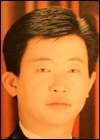 |
Speaker: Zhu Han, University of Houston, USA
Bio: Zhu Han received the B.S. degree in electronic engineering from Tsinghua University, in 1997, and the M.S. and Ph.D. degrees in electrical engineering from the University of Maryland, College Park, in 1999 and 2003, respectively. From 2000 to 2002, he was an R&D Engineer of JDSU, Germantown, Maryland. From 2003 to 2006, he was a Research Associate at the University of Maryland. From 2006 to 2008, he was an assistant professor in Boise State University, Idaho. Currently, he is an Associate Professor in Electrical and Computer Engineering Department at University of Houston, Texas. His research interests include wireless resource allocation, wireless communications and networking, game theory, wireless multimedia, and security.
Dr. Han is an NSF CAREER award recipient 2010. Dr. Han is an Associate Editor of IEEE Transactions on Wireless Communications since 2010. Dr. Han is the winner of the 2011 IEEE Communications Society Fred W. Ellersick Prize. Dr. Han is the coauthor for the papers that won the best paper awards in IEEE International Conference on Communications 2009, 7th International Symposium on Modeling and Optimization in Mobile, Ad Hoc, and Wireless Networks (WiOpt09), IEEE Wireless Communication and Networking Conference 2012, and IEEE Smargridcom 2012
|
| |
|
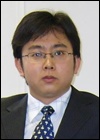 |
Speaker: Lingyang Song, Peking University, China
Bio: Lingyang Song received his PhD from the University of York, UK, in 2007, where he received the K. M. Stott Prize for excellent research. He worked as a postdoctoral research fellow at the University of Oslo, Norway, and Harvard University, until rejoining Philips Research UK in March 2008. In May 2009, he joined the School of Electronics Engineering and Computer Science, Peking University, China, as a full professor. His main research interests include MIMO, OFDM, cooperative communications, cognitive radio, physical layer security, game theory, and wireless ad hoc/sensor networks.He is co-inventor of a number of patents (standard contributions), and author or co-author of over 100 journal and conference papers. He received the best paper award in IEEE International Conference on Wireless Communications, Networking and Mobile Computing (WiCOM 2007), the best paper award in the First IEEE International Conference on Communications in China (ICCC 2012), the best student paper award in the7th International Conference on Communications and Networking in China (ChinaCom2012), and the best paperaward in IEEE Wireless Communication and Networking Conference (WCNC2012). He is an Associate Editor of IEEE Transactions on Wireless Communications since 2012.
|
Back to Top
TUTORIALS CHAIRS
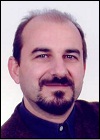
Marco Chiani
Tutorials co-chair
University of Bologna, Italy
|

Wei Chen
Tutorials co-chair
Tsinghua University, Beijing, China
|
|
|
PROGRAM AT A GLANCE >>
KEYNOTE SPEAKERS >>
INVITED SPEAKERS >>
TECHNICAL SYMPOSIA >>
INDUSTRY & BUSINESS PANELS >>
TUTORIALS >>
WORKSHOPS >>
SOCIAL EVENTS >>
|

















































